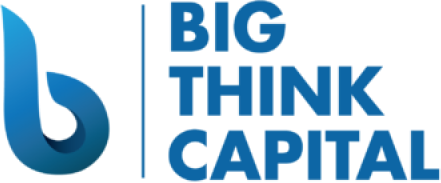Demystifying the Small Business Loan Climate in the Wake of Fed Rate Decisions
Estimated Reading Time: 5 minutes
- Understand the impact of Federal Reserve rate decisions on borrowing costs.
- Explore a variety of financing options suitable for small businesses.
- Recognize the importance of staying informed about inflation trends.
- Evaluate your financial needs before pursuing funding.
Table of Contents
The Role of the Federal Reserve in Small Business Lending
The Federal Reserve, the central bank of the United States, influences interest rates through its monetary policy. The primary tools at its disposal include open market operations, the discount rate, and reserve requirements. When the Fed adjusts the federal funds rate, it affects borrowing costs for banks, which in turn impacts the rates offered to businesses seeking loans.
- When the Fed raises rates: Borrowing becomes more expensive, leading to higher interest rates on loans. This can deter small business owners from taking on debt, particularly for expansion or big projects.
- When the Fed lowers rates: Borrowing becomes more affordable, creating opportunities for businesses to invest and grow.
As of early 2025, we are observing a gradual normalization of interest rates after several years of unprecedented low rates. This shift has created a mixed atmosphere for small business financing.
Current State of Small Business Financing
According to the National Small Business Association, small business lending in the U.S. is starting to stabilize. However, inflation remains a major concern, with consumer prices continuing to rise. The Consumer Price Index (CPI) has shown a steady uptick, and many small business owners are feeling the pinch.
- Interest Rates: The average interest on small business loans can range from 7% to 9%, depending on the type of financing and the borrower’s creditworthiness. As rates climb, understanding loan types is crucial.
- Inflation: Recent data shows inflation holding around 4.5%, which affects everything from operational costs to consumer spending power.
- Equity Financing: Venture capital funding for startups has seen a decline from its peak, pushing many small businesses to seek alternative funding options.
In light of these factors, it is essential for business owners to understand which financing options are best suited for their needs.
Exploring Financing Options
In the current lending landscape, several funding solutions are available to small businesses. Each option has its benefits and drawbacks depending on your specific circumstances. Here, we will delve into some popular small business financing products:
1. Working Capital Advances
Working capital advances are ideal for businesses in need of quick funding, often to manage day-to-day operations easily. They offer fast access to cash with minimal paperwork.
- Funding Amount: Typically ranges from $5,000 to $500,000.
- Repayment Terms: Shorter repayment terms (often 3 to 18 months).
- Best For: Businesses requiring immediate cash flow for operational expenses or unexpected costs.
2. SBA Loans
Small Business Administration (SBA) loans are a favorable choice for long-term financing. With government backing, these loans typically have lower interest rates and longer repayment terms.
- Funding Amount: Ranges from $30,000 to several million dollars.
- Repayment Terms: Up to 25 years for real estate, shorter for other uses.
- Best For: Entrepreneurs looking to establish or expand their ventures.
3. Equipment Financing
For businesses that rely on specific equipment to operate, equipment financing can be a smart decision. This type of loan allows businesses to purchase or lease equipment without large upfront costs.
- Funding Amount: Varies based on equipment type and value.
- Repayment Terms: Terms can range from 3 to 7 years.
- Best For: Businesses involved in manufacturing, construction, or any field that requires specialized machinery.
4. Merchant Cash Advances (MCA)
A merchant cash advance is not a traditional loan; instead, it allows business owners to receive a cash advance against future credit card sales.
- Funding Amount: Typically ranges from $2,500 to $250,000.
- Repayment Terms: Based on a percentage of daily credit card sales.
- Best For: Retail and service businesses with strong credit card sales.
5. Lines of Credit
A business line of credit provides flexible access to funds, allowing owners to borrow as needed, repaying only what they use.
- Funding Amount: Often between $10,000 to $500,000.
- Repayment Terms: Generally revolving, similar to a credit card.
- Best For: Businesses needing ongoing access to funds for various expenses.
Navigating Inflation Trends
Inflation is a concern not only for consumers but also for small business owners. Rising costs can reduce profit margins and, in response, potentially alter financing decisions. Here are some strategies to help mitigate the effects of inflation:
- Budgeting: Rigorously updating budgets to account for anticipated inflation can help businesses better manage cash flow.
- Negotiating with Suppliers: Maintaining open lines of communication with suppliers and negotiating prices or terms may alleviate some cost pressures.
- Diversifying Income Streams: Expanding product or service offerings can provide additional revenue channels that may protect against inflationary pressures.
Practical Takeaways for Business Owners
Navigating the small business loan climate, particularly amid rising interest rates and inflation, can be daunting. Here are three practical takeaways to consider:
- Assess Your Financial Needs: Before pursuing financing, thoroughly evaluate your business’s cash flow and funding needs. Understanding what you require will guide you towards the best financing option tailored to your goals.
- Stay Informed on Market Conditions: Keep a pulse on the Federal Reserve’s interest rate decisions and inflation trends. The decisions made by the Fed resonate across the lending landscape and can help you time your financing approach strategically.
- Engage with Financial Experts: Consult with lending specialists, like those at Big Think Capital, who can help tailor your financing strategy. Their insights into market conditions and available products can empower you to make informed decisions.
Conclusion
As we move into 2025, understanding the evolving small business loan climate is critical for entrepreneurs aiming to secure funding amidst Fed rate decisions and inflation trends. By staying informed and exploring the myriad of financing options available, business owners can position themselves for success in an ever-changing marketplace.
At Big Think Capital, we are committed to helping small businesses thrive by matching them with the right funding solutions. Our team of experts is ready to assist you in navigating this complex landscape.
To learn more about our services or to speak with a funding expert, visit us at bigthinkcapital.com. Secure your business’s future with the right financial strategy today.
FAQ
1. What are small business loans?
Small business loans are funds borrowed by businesses to help them grow, manage cash flow, or invest in new equipment.
Small business loans are funds borrowed by businesses to help them grow, manage cash flow, or invest in new equipment.
2. How do interest rates affect small business funding?
Higher interest rates make borrowing more expensive, potentially deterring business owners from taking loans.
Higher interest rates make borrowing more expensive, potentially deterring business owners from taking loans.
3. What types of financing options are available for small businesses?
Options include working capital advances, SBA loans, equipment financing, merchant cash advances, and lines of credit.
Options include working capital advances, SBA loans, equipment financing, merchant cash advances, and lines of credit.
4. How can inflation impact my small business?
Inflation can increase operational costs and reduce consumer spending, influencing your financing decisions and profit margins.
Inflation can increase operational costs and reduce consumer spending, influencing your financing decisions and profit margins.
5. Why is it important to consult with financial experts?
Financial experts provide tailored insights and strategies suited to your business needs, helping you navigate the complexities of financing.
Financial experts provide tailored insights and strategies suited to your business needs, helping you navigate the complexities of financing.






